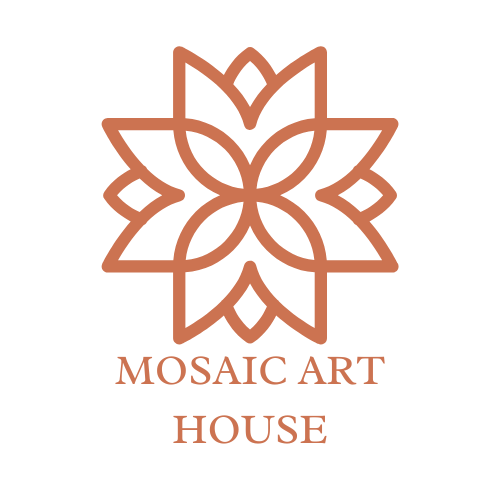Turkish Marbling Workshop
Turkish Marbling Workshop
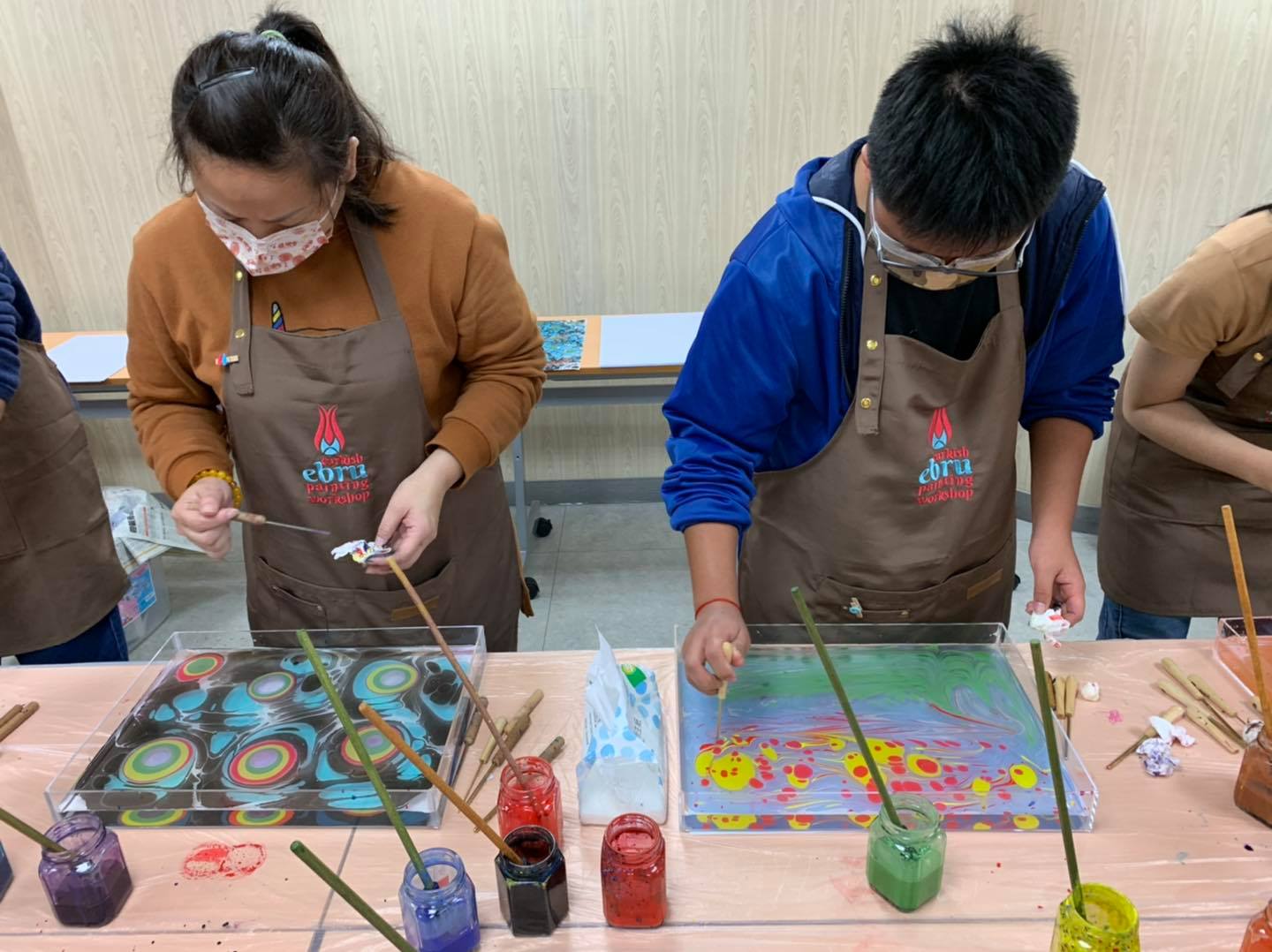
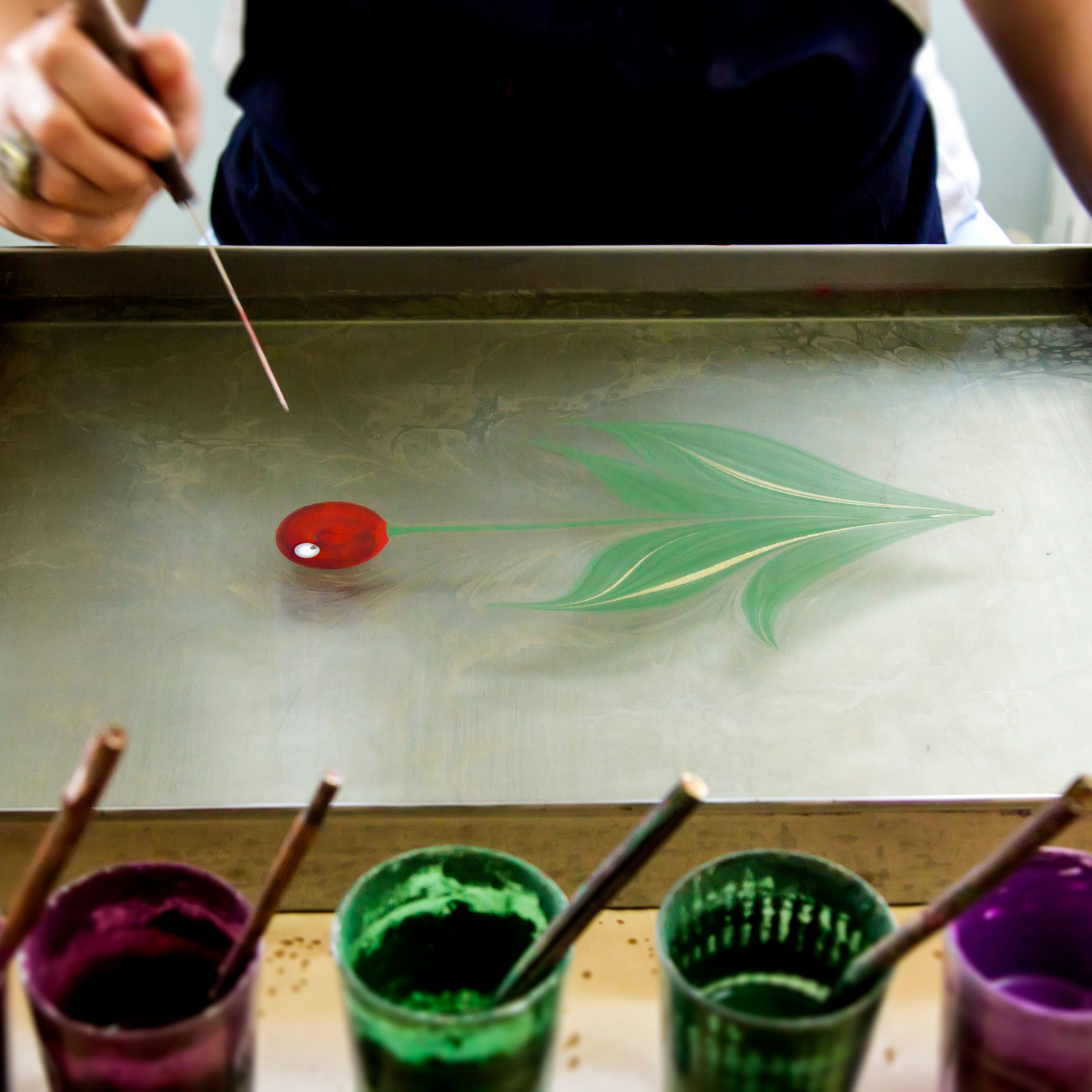
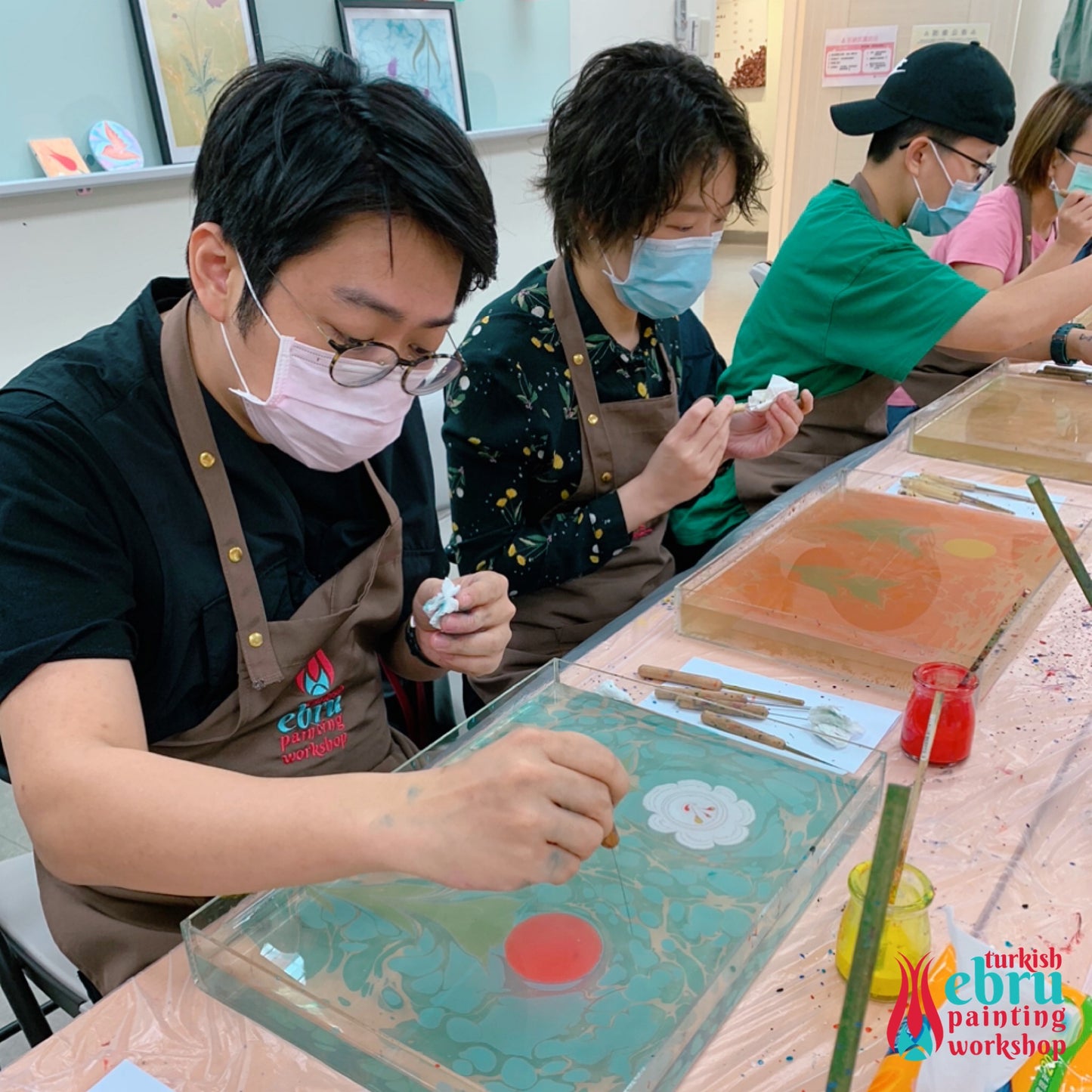
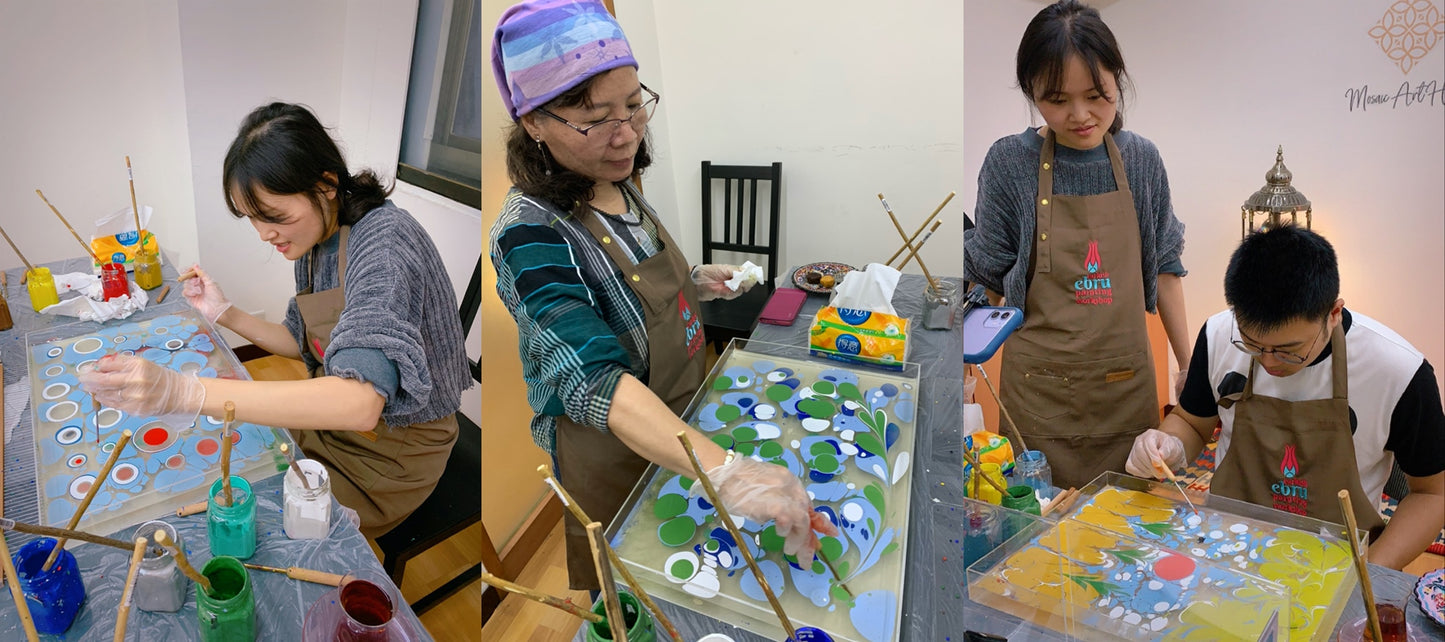
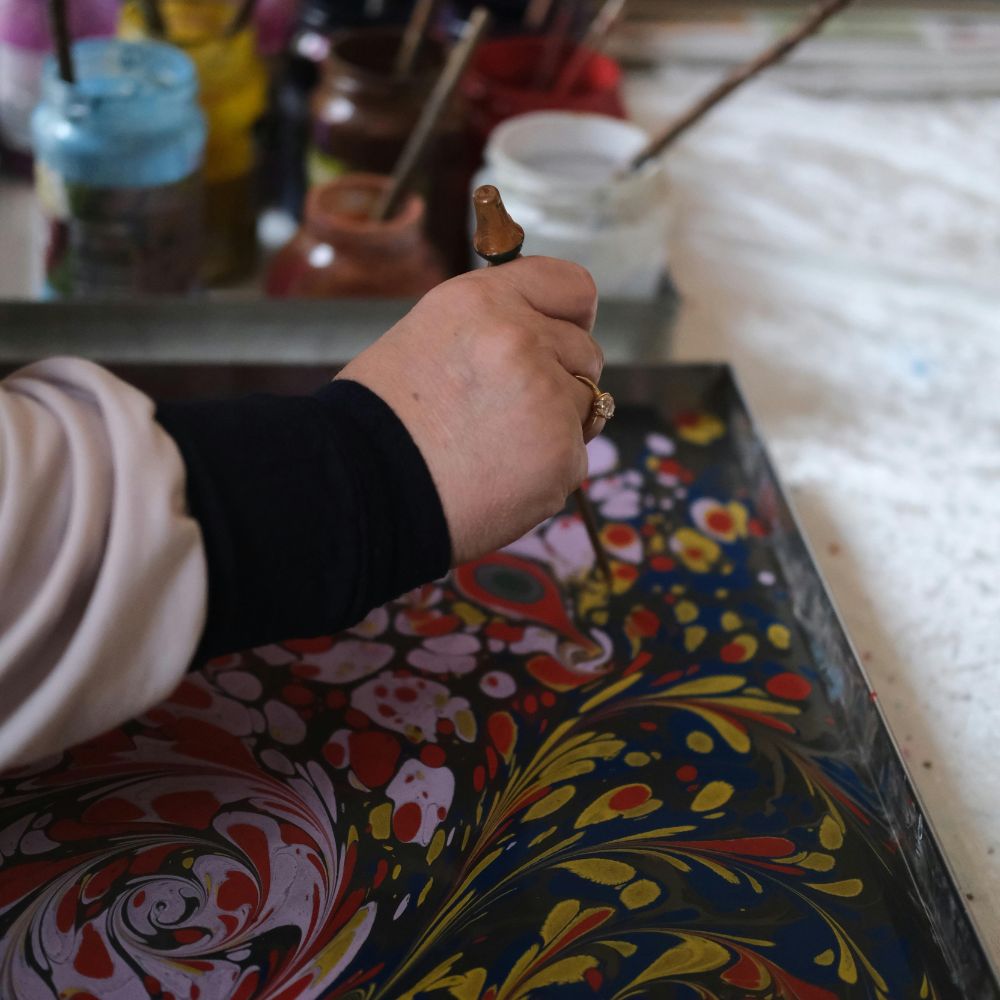
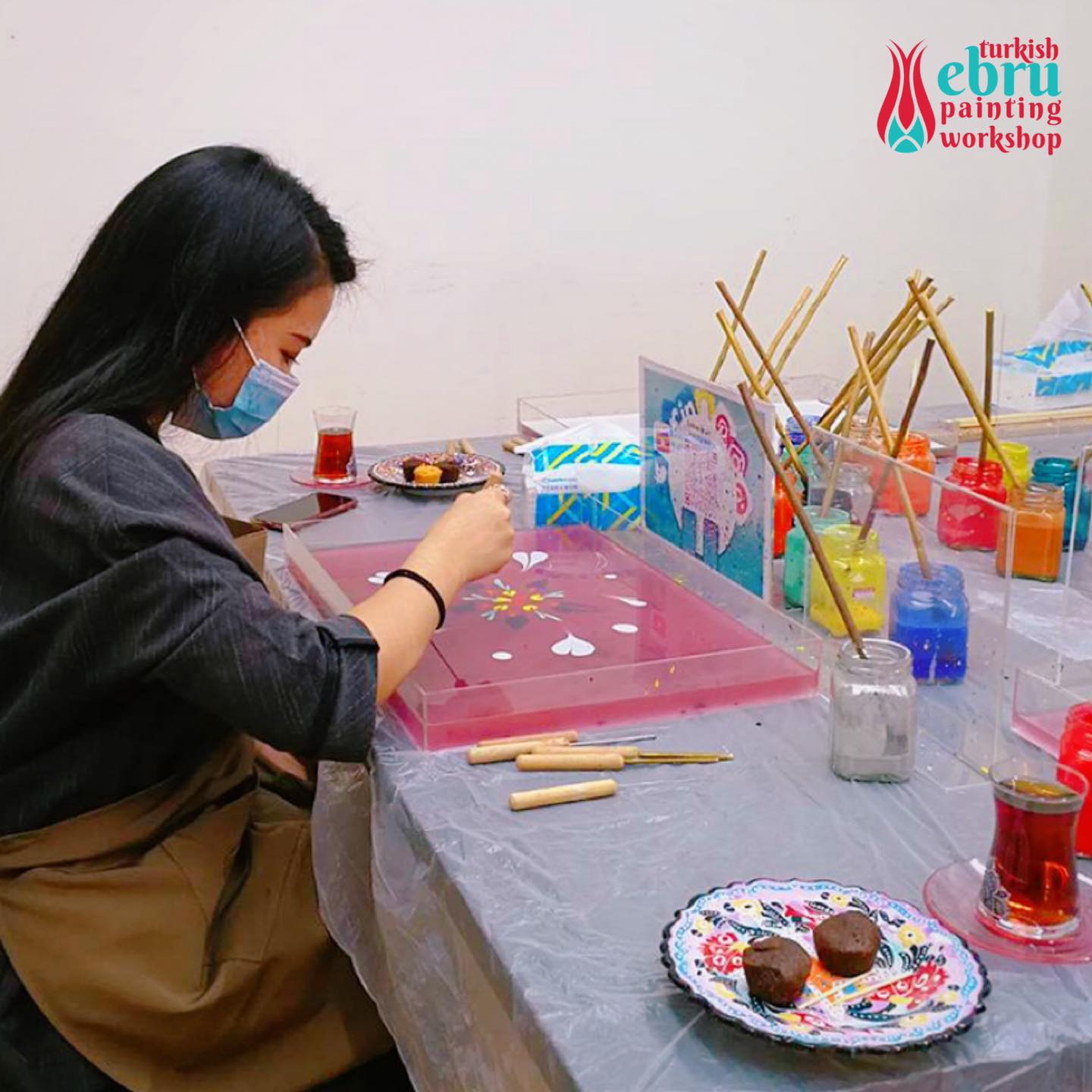
If you wish to pay via VISA/MasterCard, please place your order through this link: https://shorturl.at/lswBN
Ebru, Turkish Art of Marbling
Ebru is the traditional Turkish art of creating colourful patterns by sprinkling and brushing colour pigments onto a pan of oily water and then transferring the patterns to paper. Known as marbling, the designs and effects include flowers, foliage, ornamentation, latticework and moons, and are used for decoration in the traditional art of bookbinding. Highly regarded, it is on UNESCO’s intangible cultural heritage list. It has been practiced in Turkey since the 13th century.
Today the tradition continues.… The art of Ebru has a long history that predates the Islamic period. With its roots in Turkistan, the art came to the Uighurs before being perfected by the Ottomans. For many centuries people have thought that Turkish artists’ marbling styles were the most advanced and skilled in the world.
The tradition is practised without barrier of age, gender or ethnicity, and plays a significant role in the empowerment of women and the improvement of community relationships. The collective art of Ebru encourages dialogue through friendly conversation, reinforces social ties and strengthens relations between individuals and communities.
Now, this exotic and ancient art can be experienced in Taiwan. All the paints and tools are imported from Turkey and the teachers from Turkey will guide you through the experience.
History of Ebru
The art of Ebru has a long history that predates the Islamic period. With its roots in Turkistan, the art came to the Uighurs before being perfected by the Ottomans. The detailed history of paper marbling remains unknown, but historical sources show that some works were created with similar techniques in China, dating back to the eighth century. These works are named “liu sha shien.” Other similar examples have also been seen in Japanese culture under the name of “suminagashi” since the 12th century. Some paper marbling pieces were also produced in Central Asia and Iran under the name of “ebre” or “ebri” in the later centuries. This proves that paper marbling, like paper, spread from east to west using the Silk Road and other trade routes.
Course Package: Basic Package - Paper Creation Experience (Multiple works can be completed) Fee: $950 Size: 29.7 x 42 cm (per sheet) *Approximately A3 size
Important Notes: The course provides each student with paper for learning and creation. After instructor guidance, students can freely create. All paper can be used freely. After the course ends, paper needs to wait approximately 15 minutes for the paint to dry before taking home. Students may frame or laminate the works themselves.
Process:
- Introduction to Turkish marbling (Ebru) culture
- How to use materials and supplies, composition techniques
- Instructor demonstration of various painting techniques and patterns
- Students' independent practice and creation
Experience Includes:
- Art materials and equipment (depending on selected course)
- Imported paints
- Traditional Turkish tea and snacks
- Instructor fee
- Venue fee
